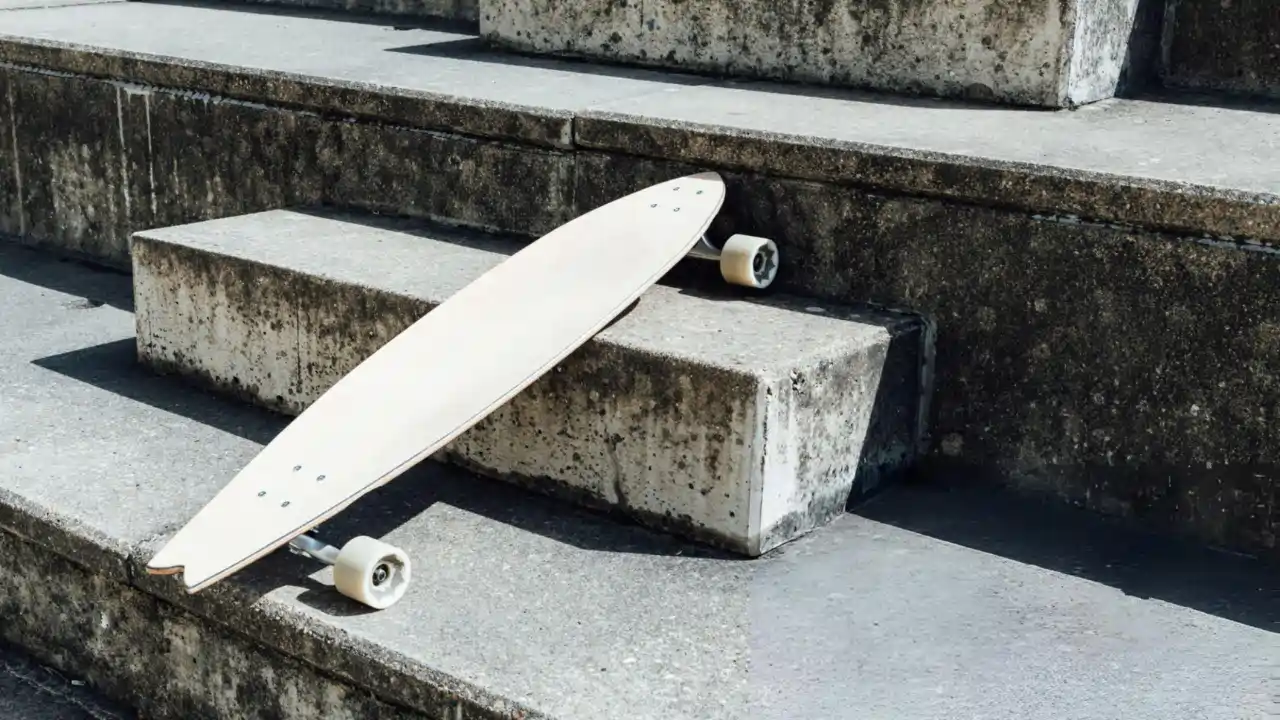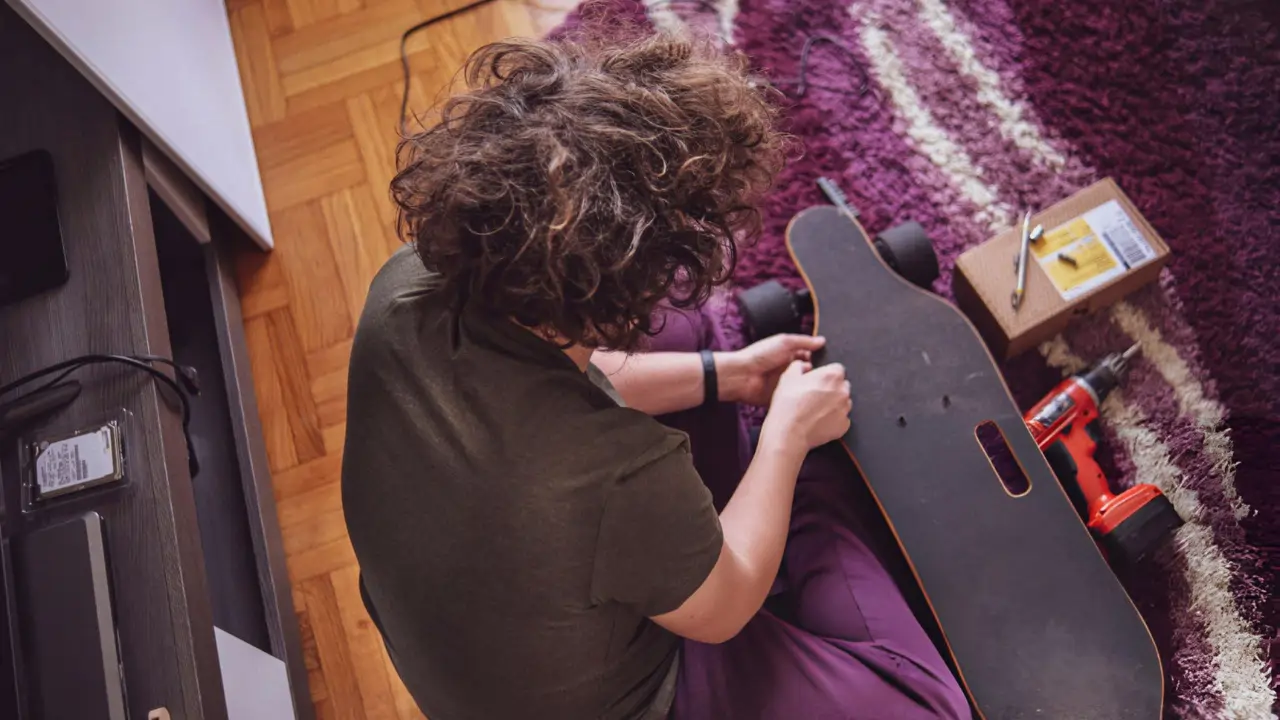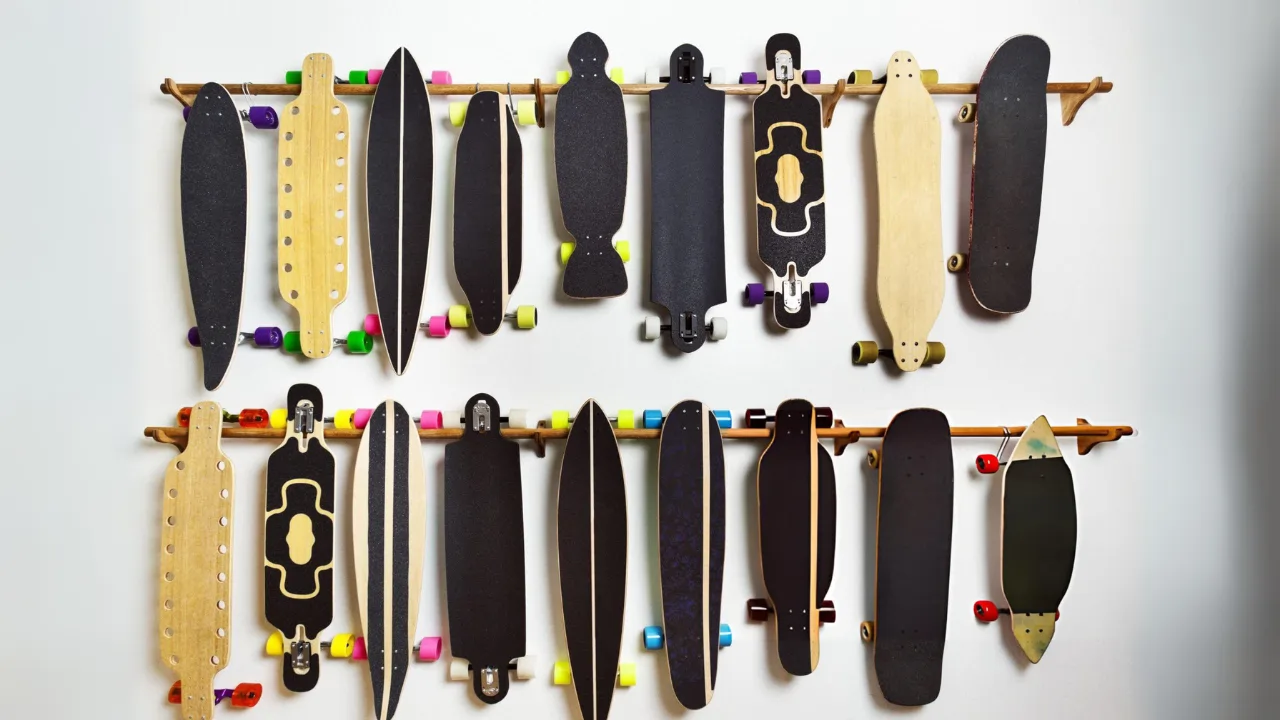Choosing the right skateboard deck is as important as finding the perfect pair of shoes. It has to fit just right to fit well and suit your style. Skateboarders must understand the different types of skateboard decks, regardless of whether they are new to skating or looking for an upgrade. This guide is designed to help you make an informed decision by walking you through the various options available.
Table of Contents
1. Standard Skateboard Decks
The standard skateboard deck is the most popular among all skateboard decks available. These doors are typically 32 inches long and 7.5 to 8.5 inches wide. Due to their versatility, these skateboards are great for both beginners and experienced skaters alike. Due to their balanced design, which is perfect for tricks and flips, these skateboards are commonly used for street skating and skateparks.
2. Cruiser Skateboard Decks
Smooth, comfortable rides are what cruiser decks are all about when it comes to their design. They are usually shorter than longboards but have a bigger deck than standard boards, providing a stable platform for relaxed riding. It is also common for cruisers to be equipped with a kicktail, which makes them ideal for navigating urban environments and making quick turns. If you’re looking for a skateboard for commuting or cruising around town, you’ve come to the right place.
3. Longboard Decks
Longboards are the big brothers of the skateboard family. Decks typically range from 33 inches to more than 50 inches in length and come in various shapes, such as pintails, drop-throughs, and top-mounts. Longboard decks are designed for speed and smoothness, making them ideal for downhill racing or long-distance commuting. In addition to their larger size, they offer enhanced stability, making them an excellent choice for beginners and professionals.
4. Old School Skateboard Decks
In addition to their wide bodies and flat noses, old-school decks have a nostalgic flair that makes them stand out. It reminds me of the skateboards from the 70s and 80s, but they often have a modern twist. As a stable and robust platform these decks are perfect for pool skating and carving as they offer a stable and robust platform for powerful manoeuvres. Undoubtedly, old-school decks are fantastic if you simultaneously appreciate retro style with contemporary performance.
5. Mini Skateboard Decks
In general, mini decks are smaller versions of standard decks, typically less than 7 inches wide and around 28 inches long. They would be perfect for younger skaters or those with smaller feet. In addition to being lightweight and easy to maneuver, mini decks are also excellent for learning new tricks because they are easy to maneuver. They’re also a fantastic option for riders who want a portable board for casual skating.
6. Popsicle Skateboard Decks
In terms of skateboarding, popsicle decks are the epitome of modernity. In addition to their symmetrical shape, these skates’ rounded noses and tails make them highly versatile for street skating. Among skaters who love performing technical tricks, popsicle decks are popular because of the excellent control and balance they provide. Initially named for resembling a popsicle stick, they have become a staple in the skateboarding community.
7. Shaped Skateboard Decks
Shaped decks are a departure from the traditional popsicle design, offering unique shapes tailored to fit the specific styles of the consumer. These decks provide a variety of riding experiences, from fishtails to swallowtails. For example, a fishtail deck may offer better carving control, while a wider nose may provide excellent cruising stability. Skating decks are perfect for skaters who want to try something new or specialize in a particular riding style.
8. Double-Kick Skateboard Decks
There are raised ends on both the nose of the deck and the tail of the deck on double-kick decks. This design is crucial for flip tricks and ollies, as it allows skaters to pop their boards off the ground with either foot when performing flip tricks or ollies. Among skaters who love to perform intricate maneuvers and need that extra versatility to skate various terrains, these decks are a favorite of street and park skaters.
9. Downhill Skateboard Decks
The key to a successful downhill deck is speed and control. As a result, they are typically longer and come with a lower center of gravity, often achieved through drop-throughs or drop-decks. As a result of these characteristics, you can bomb hills at high speeds with maximum stability. If you are an adrenaline junkie looking for a thrilling ride, downhill decks are engineered to ensure that you remain in control and steady during the ride.
10. Freestyle Skateboard Decks
Designed with creativity and expression in mind, freestyle decks are a great way to express yourself. They are not unusual to be symmetrical, facilitating the transition between regular and fluid switch stances. With these decks, you can perform various tricks on flat ground, including spins, flips, and manuals, among other things. It is all about personal style in freestyle skating, and the right deck will help you showcase your unique style.
11. Park Skateboard Decks
Decks designed for skate parks are tailored specifically for the smooth, controlled environment of skate parks. Their medium width and symmetrical shape make them perfect for riding ramps, bowls, and transitions because they are typically of medium width and symmetrical shape. As these decks are designed for skateparks, they are built to handle the smooth surfaces and transitions of the park, providing a high level of precision for aerial tricks and grinds.
12. Street Skateboard Decks
There is a reason why street decks are optimized for the urban jungle. Their narrower widths and lighter weights make them easier to maneuver and flip when needed. These decks have been designed to withstand the rough surfaces and harsh impacts of street skating, from grinding rails to jumping down stairs. Durability and agility are two of the most essential features of street decks.
Materials Used in Skateboard Decks
In the past, skateboard decks were made of maple wood, which has a seven-ply structure and is recognized for its strength and flexibility. Modern decks may also be made with carbon fiber, bamboo, and plastic composites. These materials offer many advantages, including light weight, increased durability, and different flex properties. Consider what material best suits your style, as each has its benefits.
Choosing the Right Skateboard Deck for You

When selecting the perfect skateboard deck, you must consider various factors, such as your skating style, experience level, and personal preferences. Think about the type of skating you will do the most: street skating, cruising, or downhill skating. Experimenting with different shapes and sizes is always a good idea to find what fits best under your feet. It is important to remember that the right deck can significantly impact how you skate.
Maintenance Tips for Skateboard Decks

It is recommended that you store your skateboard deck in a cool, dry place away from direct sunlight and moisture to maintain its best condition. Ensure it is regularly checked for cracks or chips and that rough edges are sanded down to prevent further damage. It’s essential to replace grip tape when it loses its stickiness and avoid riding in the rain to prevent the wood from warping. If you take care of your deck correctly, you can extend the life of it and ensure that it is safe to ride on.
Conclusion about Types of Skateboard Decks
Skaters must understand the different types of skateboard decks, whether they are just starting out or want to try a new style. Every kind of skate offers a unique set of benefits tailored to meet the specific needs of the skater. By considering your style and trying out a variety of decks, you’ll find the perfect fit for your performance and enjoyment.
FAQs
What is the best size skateboard deck that I should choose for my skateboard?
To choose the right size, you must consider your shoe size, height, and skating style. More expansive decks generally offer higher stability, whereas narrower decks are more accessible to flip and maneuver due to their narrow design.
In skateboarding, do expensive skateboard decks make a difference?
Expensive decks often use higher-quality materials and construction methods, which can provide better performance and durability. However, a moderately priced deck can still be excellent for most skaters.
Is it possible to use a longboard deck for tricks?
Longboards are designed more for cruising and speed than for tricks. While they can do some tricks, they are better suited for performing technical maneuvers than standard or popsicle decks.
What is the best skateboard deck for beginners?
Those who are new to skateboarding should start with a deck that is around 8 inches wide. This deck balances stability and maneuverability, making it easier to learn basic tricks and techniques.
When should I replace the skateboard deck on my skateboard?
If your deck shows signs of significant wear, such as deep cracks, major chips, or a noticeable loss of pop, it is time to replace it. Frequent skaters may need a new deck every couple of months, while casual riders will be able to last longer.

